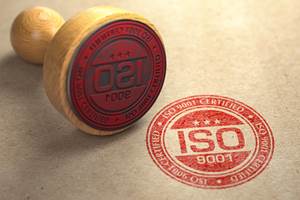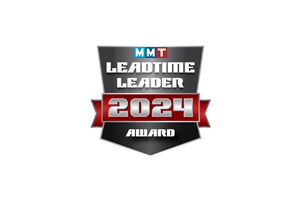Making Eye Safety a Shop Priority
Facts and figures proving the necessity of eye safety on the job and tips for protecting your shop employees.
As many as 2,000 employees in America suffer work-related eye injuries every day, and 81 percent of those cases are men. And, according to the U.S. Bureau of Labor and Statistics, workers aged 25 to 44 accounted for 62 percent of eye injuries.
Getting all workers and employers to understand the importance of wearing safety goggles and glasses continues to be a challenge. More than one in four cases of eye injuries occur at work with as many as 50 percent of those injured wearing no eye protection at all.
Prevent Blindness America (PBA) is committed to raising awareness about the necessity of eye safety on the job.
Additionally, of those that were injured, many either didn’t think they would need eye protection, or were wearing the wrong kind. Only eye protection that has been certified by the American National Standards Institute should be used. Everyone must make sure that “ANSI Z87” is clearly stamped on the frame or lens.
Employers must make eye safety a priority. As of 2003, the U.S. Department of Labor estimates that eye injuries total more than $300 million a year in lost production time, medical expenses and worker compensation. Therefore, in certain industries, a face shield and goggles should be absolutely mandatory to protect workers from chemical splashes, or welding light and electrical arc. The Occu-pational Safety and Health Administration (OSHA) requires that employers ensure the safety of all employees in the work environment,
including providing eye and face protection whenever necessary.
Safety Tips in the Shop
Prevent Blindness America offers the following tips to promote safety in the workplace:
- Safety eyewear must have “ANSI Z87” clearly marked on all glasses or goggles and should be worn at all times whenever eye hazards are present.
- Workers should know where the nearest eye wash station is at their job site and how to use it.
- Employers should be notified immediately if safety hazards are discovered.
- Employees should have regular eye exams to make sure their vision is adequate to do their jobs safely.
- Those who already have reduced vision should ask their employers if prescription glasses or goggles could be provided.
Ten Essential Steps to Ensure Workplace Safety
- Assess! Look carefully at plant operations. Inspect work areas, access routes and equipment. Study eye accident and injury reports. Identify operations and areas that present eye hazards.
- Test! Uncorrected vision problems can cause accidents. Use vision testing in your employee pre-placement and routine physical examinations.
- Protect! Select protective eyewear designed for a specific duty or hazard. Protective eyewear must meet the current standards referenced by the Occupational Safety and Health Act of 1970 and later revisions.
- Participate! For maximum protection against eye injuries, establish a 100 percent mandatory program that requires eye protection in all operation areas of your plant. Experience shows this kind of program prevents more injuries and is easier to enforce than one limited to certain departments, areas or jobs.
- Fit! Workers cannot be expected to use their protective eyewear unless it fits well and is comfortable. To ensure that eyewear is adequate, have it fitted by an eye care professional or someone trained to do this. Provide the means for repair of eyewear and require each worker to be responsible for his or her own gear.
- Plan for an emergency! Establish first-aid procedures for eye injuries. Make eyewash stations accessible, especially where chemicals are used. Train workers in basic first aid and identify those with more advanced first-aid training.
- Educate! Conduct ongoing educational programs to establish, maintain and reinforce the need for protective eyewear. Add eye safety to your regular employee education/training programs and include it as a part of new employee orientation.
- Support! Management support is key to having a successful eye safety program. Management should all set an example by wearing protective eyewear whenever and wherever needed.
- Review! Continually review and, when needed, revise your accident prevention policies. The goal should be to have NO eye injuries or accidents!
- Put it in writing! When all parts of your safety program have been created, put them in writing. Display a copy of the policy in areas where workers go, and include a review of the policy in new employee orientation.
“We already know that 90 percent of all job-related eye injuries can be prevented,” says Daniel D. Garrett, senior vice president of PBA. “When employers and workers join together to make their job sites safer, the results will be dramatic.”
![]()
Related Content
How To Get Buy-In from Your Team for ISO 9001
Here are four tips for getting your team on board once you’ve decided to become ISO 9001 certified.
Read MoreFAQs: What Are the Leadtime Leader Awards?
Here are answers to some frequently asked questions about MoldMaking Technology's annual Leadtime Leader Awards competition.
Read MoreHow To Get Your Team on Board with ISO 9001
ISO 9001 can simplify life for the business and the team. Here are 4 ways to sell this certification to gain your team's support.
Read MoreU.S. Economic Fundamentals Impacting Moldmaking
The economy continues to downshift, capping growth in moldmaking.
Read MoreRead Next
Reasons to Use Fiber Lasers for Mold Cleaning
Fiber lasers offer a simplicity, speed, control and portability, minimizing mold cleaning risks.
Read MoreAre You a Moldmaker Considering 3D Printing? Consider the 3D Printing Workshop at NPE2024
Presentations will cover 3D printing for mold tooling, material innovation, product development, bridge production and full-scale, high-volume additive manufacturing.
Read More






.jpg;maxWidth=300;quality=90)
















